QuestionI have a 10 Gallon tank, thats been going for several weeks, and it has 1 unergravel cleaneing system and a side mounted aqua Tech aquarium 5-15 filter. My water went GREEN, not the glass but the water. I tried NUMEROUS things to clear it like water changes, Accu-clear, c-100, Clear Water, and recently tried a pond water cleaner, to clear it up. It DID clear it up, but, I lost 90 % of my fish. I had 4 guppies, 2 male Lyretail, 3 sword Tails, 2 tiger barbs and 5 Platies, with 2 corydoras, and 2 chinese algea eaters, and only 1 swordtail, 1 tiger barb, one platy, one chinese algea eater and my cory cats lived. Why did they die? Is pond cleaner harmful to tropical fish? If so, why did it kill mine, and not a friends who used it in his tank with Tropical fish. Thanks
AnswerHi Patty;
Your tank was pretty crowded, especially for a new tank. With so many fish there was plenty of "fertilizer" in the form of waste. It fed the unicellular algae that caused the green water so it really liked your tank. By killing the algae with the pond water cleaner it caused too much organic matter to be released into the water all at once. This decreases oxygen levels and raises harmful toxins like ammonia and nitrite. It was simply too much for the fish to take.
Take a sample of the water to the fish store to test for three different things;
Ammonia, Nitrite and Nitrate.
Ammonia and Nitrite should both be zero in a cycled and fully established tank. In a new tank they will be elevated at different times while the initial cycling takes place. Partial water changes 3 times a week will keep them low enough for the fish to tolerate during the initial cycling period.
Nitrate, which is the end result of the biological filtration process going on in your tank, can be up to 40 ppm with little effect on the fish. (It is much less toxic than nitrite). Regular water changes of 25% every week to 2 weeks will keep them in check.
Hang in there and don't give up! You'll get this thing straightened out and have happy healthy fish again. Just take it very slow and don't add more fish until you know it is fully cycled. Having "zero" ammonia and nitrites after a few weeks with fish in the tank will tell you it is done. (After the first fish goes in it takes 6 to 8 weeks)
Here is my article on new tanks to help you understand how the whole process works and why it is important to start slow (with no more than 2 fish for every ten gallons) for the first 6 to 8 weeks;
**********
New Tank Syndrome or Break-in Period
So you have a new tank and you filled it up, put the filter together, mounted the heater into place and turned on the lights. You have all the plants and decorations where you want them....
You are ready for fish.
But, your filter is not ready for a full tank of fish yet.
The filter is running and moving the water and cleaning out crud, right? Of course!
But a very important part of your filter is the part you can't see. An aquarium filter removes the larger visible stuff, but it also must remove the dissolved fish waste that turns into ammonia in the water. To do this, special bacteria must grow in the filter system and on the particles of gravel in the bottom of your tank. This process occurs even on a limited scale in little fish bowls that have no filter in them.
This is "New-Tank Syndrome" or the "Break-in Period". The entire process takes 6 to 8 weeks to complete because these "nitrifying" bacteria grow quite slowly.
Start off with only two hardy fish for every ten gallons of water and don't add more until the 6 to 8 weeks has gone by. Hard to be patient, but it is worth it to keep your fish alive and healthy. As a matter of fact, the bacteria cannot develop without fish in the tank. You can let that tank sit forever without fish in it, but as soon as the first fish goes in the process begins. Avoid changing the filter pads during break-in. This removes the bacterial colonies that are essential to a balanced aquarium. You can rinse the filter pad out in a container of aquarium water. This will preserve most of the bacteria colonies while still allowing your filter to flow freely. Even using bacteria additives and water conditioners when you first set up the tank will not make a tank cycle by itself. If there are no fish to provide food (fish waste) for the bacteria, the beneficial bacteria cultures will die and you will have to start the colonies all over again once fish are added to the tank.
Feed your new fish VERY lightly. Any excess food will cause additional waste your system cannot afford to have right now. If you see food floating around or lying on the plants and gravel after five minutes, too much food is going into the tank. Cut back a little each time you feed until it is ALL gone 5 minutes after you feed them.
During this "break-in period" your tank will become cloudy and milky looking. You may have to tolerate this for the entire break-in period but it is only temporary. Changing 25% of the water three times a week until the break-in period is over helps a great deal. Changing water reduces the ammonia and nitrites that rise while the bacteria continues to multiply. If ammonia and/or nitrites become too high, your fish will become stressed and possibly die. Use a good water conditioner when you replace the water and make sure it is the right temperature to avoid shocking your fish.
When the break-in is over after 6 to 8 weeks and there are no nitrites or ammonia present in the water you can slowly add more fish. Add one or two every week until you reach the desired population. This allows the bacteria to adjust to the new population every time before adding more. Monitor the nitrites and ammonia to be sure they don't come up. If they do, make a 25% water change and check them again. Don't add the next fish until the levels are down again.
The safe maximum population for any size tank is one inch of adult fish for every gallon of water in the tank. Do some research to be sure of the fish you are interested in. Even though they are small when you buy them, you have to base your population calculations on full-sized adult fish. Many hobbyists have up to two inches per gallon but this can be risky. If a water quality issue arises or a disease occurs it will spread fast and furious in an over-populated tank. In any case, 25% water changes every week to two weeks are absolutely essential for the health of your fish.
Following these guidelines will help you get your new tank on the right track.
**********
Followups welcome
At Your Service;
Chris Robbins
Come on over and join us on the freshwater fish forum at About.com to get even more information too;
http://forums.about.com/ab-freshaquaria/start
My member name is ChrisR62. See You There!

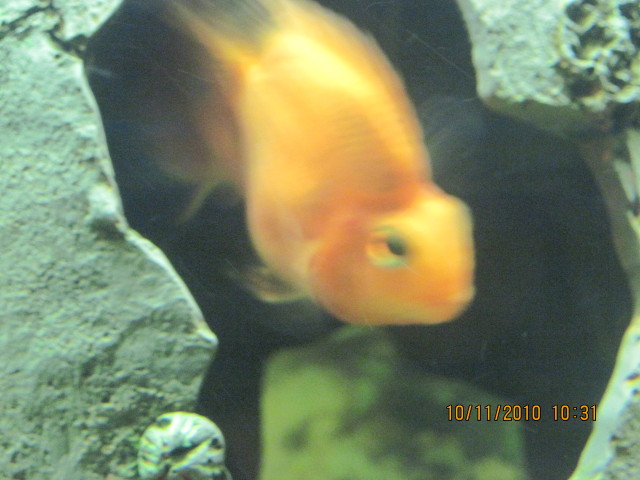 fish indentification
Question
my fishy
i just want to know if u can tell me
fish indentification
Question
my fishy
i just want to know if u can tell me
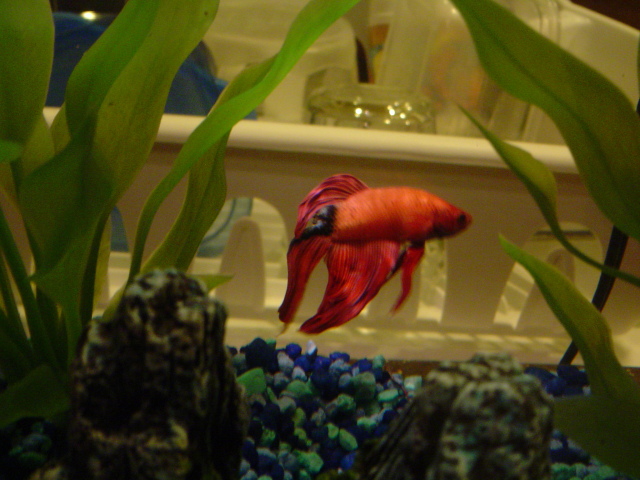 betta tail problem
Question
Decaying Fin
Hi Lynda! I need some serious hel
betta tail problem
Question
Decaying Fin
Hi Lynda! I need some serious hel
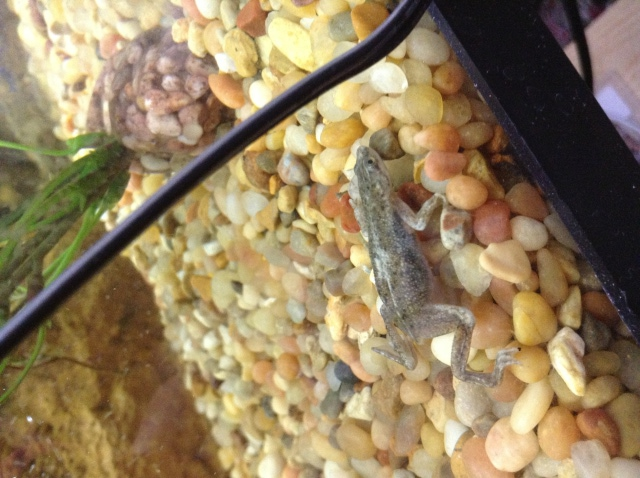 African dwarf frog
Question
Side/top Front
My African dwarf
African dwarf frog
Question
Side/top Front
My African dwarf
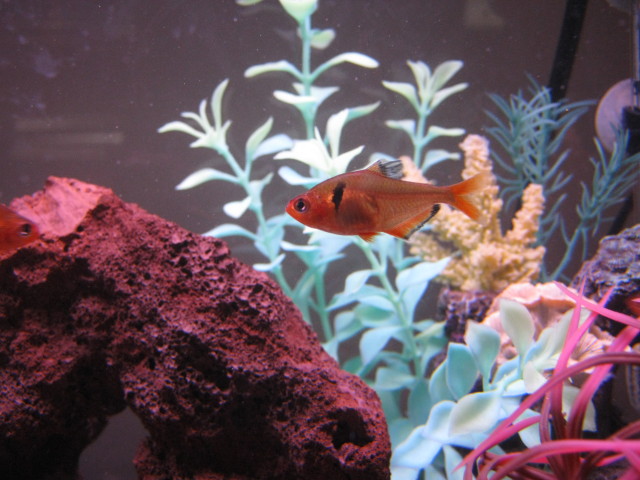 aggression or disease?
Question
tetra fin
Hi, I have a 15 gallon freshwater ta
aggression or disease?
Question
tetra fin
Hi, I have a 15 gallon freshwater ta
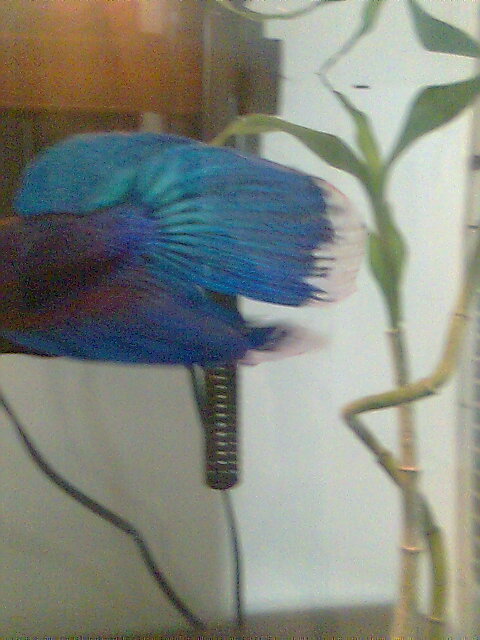 Finrot
QuestionQUESTION: Hi. I was wondering our Bettas fin is
Finrot
QuestionQUESTION: Hi. I was wondering our Bettas fin is